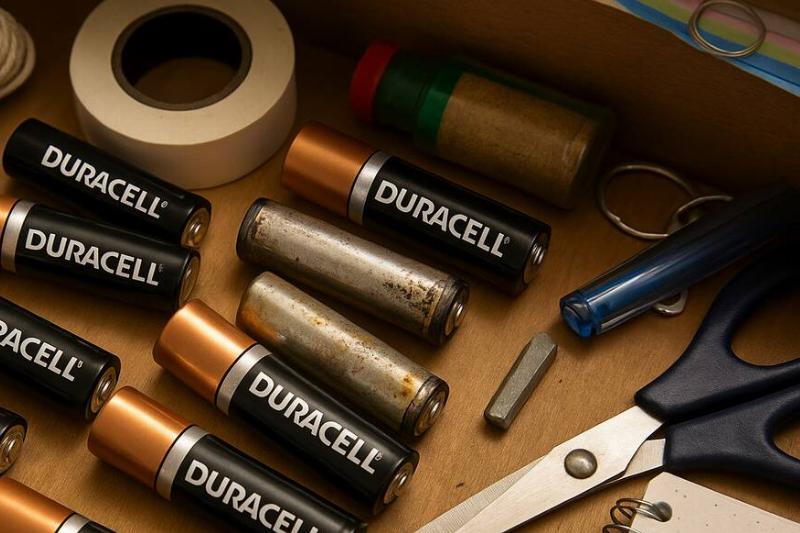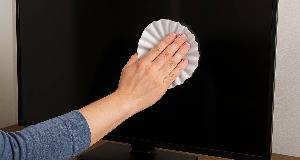Safety Experts Warn Against Storing Loose Batteries In A Junk Drawer
Everyone has that one drawer that has become the “junk drawer.” The place where you toss spare keys, tape, pens that may or may not work, and some spare or old batteries. It feels harmless, until you learn that storing loose batteries there can actually be dangerous. Safety experts have been sounding the alarm for years, and once you understand why, it makes total sense. Here’s what makes storing loose batteries in a junk drawer so dangerous, and what to do instead.
The Problem You Can’t See

Batteries don’t look dangerous, but inside, they’re filled with energy waiting to be released. When batteries touch metal objects like coins, paper clips, or keys (things that are commonly found in junk drawers) it can create a short circuit. That short circuit builds heat fast. And in a closed drawer with paper or lint, that heat can start a fire. It’s rare, yes, but not so rare that it’s something you don’t need to worry about.
Why It’s So Easy To Overlook

The junk drawer is used by many like a catch-all for things we don’t have a place for but might need later. So when a remote dies or a toy needs a replacement, extra batteries end up in that drawer too. The trouble is, batteries roll around and bump into things over time. The casual clutter that’s contained in that drawer is exactly what turns an ordinary battery into a hidden fire hazard.
It’s Not Just Old Batteries

Many people assume dead batteries are harmless, but they can still hold a small charge. And even that leftover energy is enough to cause a spark. Plus, storing new and used batteries together makes the problem worse because contact between the two can create electrical flow. Storing them together also makes it easier to mix up which batteries are dead and the ones that still have charge left. If you’re not sure which is which, that mix-up can quietly become a safety issue hiding in your drawers.
The Smart Way To Store Them

The best solution for storing batteries is also super simple: store batteries in their original packaging or a small plastic case. If you don’t have either, wrap the ends with electrical tape to cover the terminals. Then, keep them in a cool, dry place, away from metal, heat, and humidity. It doesn’t need to be anything fancy. Even a labeled food storage container works perfectly. The main goal is just keeping them separated and contained.
What About Rechargeable Batteries?

Rechargeable batteries are handy, but they still carry the same risks. They can hold higher charges and, if damaged, can overheat or leak. Treat them with the same care you would any other battery, store them in a separate container, and avoid letting them pile up. And if one of your rechargeable batteries looks swollen, cracked, or oddly shaped, it’s time to recycle it safely. Don’t toss it in the trash, take it to a local battery recycling drop-off box instead.
A Good Excuse To Organize

If you needed a reason to tackle cleaning out that junk drawer, this is a great one. Sorting it doesn’t have to take hours either. Just take everything out, separate the batteries, and give the drawer a quick wipe. You’ll probably find duplicates of things you didn’t realize you owned, and you’ll gain a little peace of mind knowing you’ve made the space safer. Small changes really can make a big difference.
Teaching Good Habits At Home

Kids and teens often dig through drawers looking for things like batteries, flashlights, or chargers. Taking a few minutes to explain why loose batteries don’t belong there helps them understand the safety part too. It’s one of those “little lessons” that will hopefully stick with them when they grow up. Teaching your family safe storage habits early helps it becomes second nature for them, and you end up preventing future accidents before they ever happen.
Related Articles
-What Not to Do with a Portable Jump Starter to Avoid Frying Your Car Battery
-Power Tool Organizer Ideas: Best Workshop Storage
-You've Been Using These Everyday Items Wrong Your Whole Life
Your junk drawer doesn’t have to be perfect, but it shouldn’t be dangerous. Storing batteries safely takes only a minute, yet it can protect your family and your home from an accidental fire. It’s just one small way that cleaning and organization helps keep your home safe. Sometimes the smallest safety hacks end up being the best ones.









